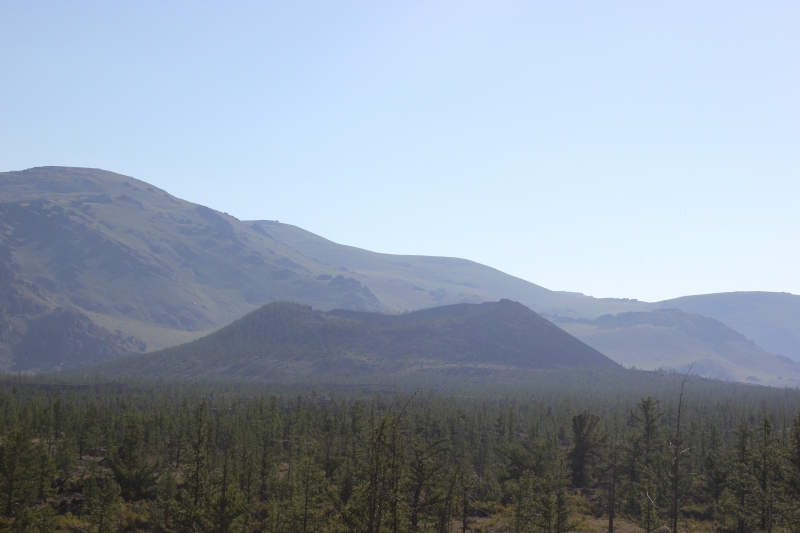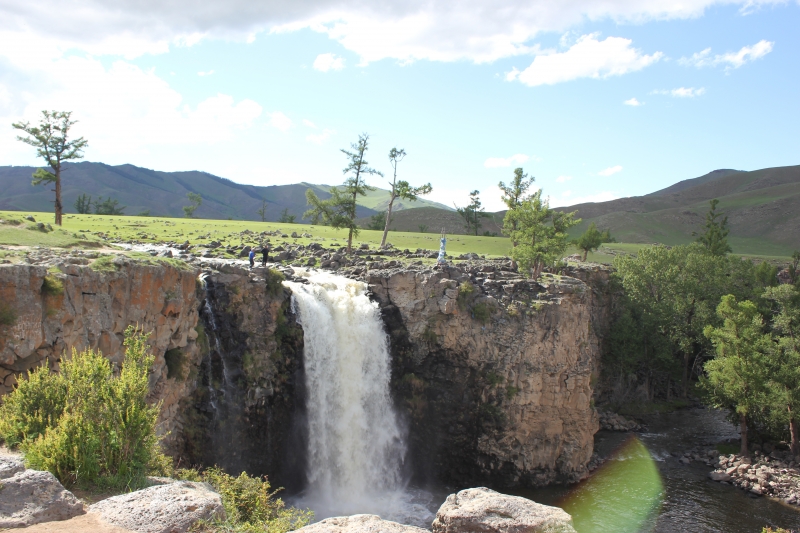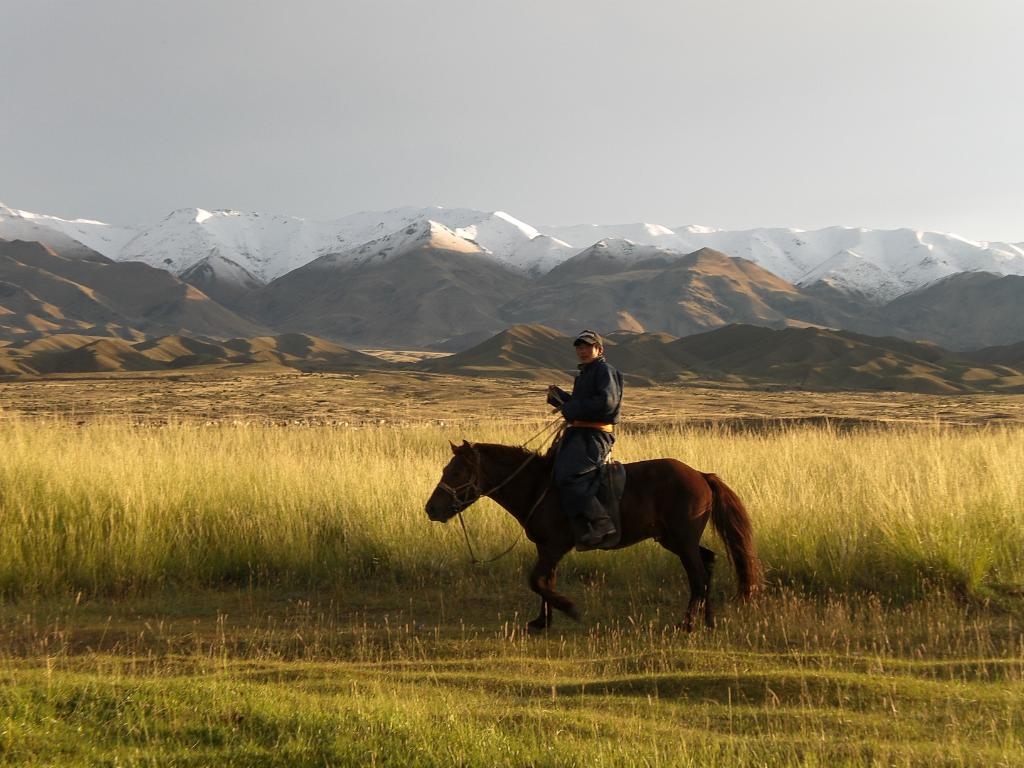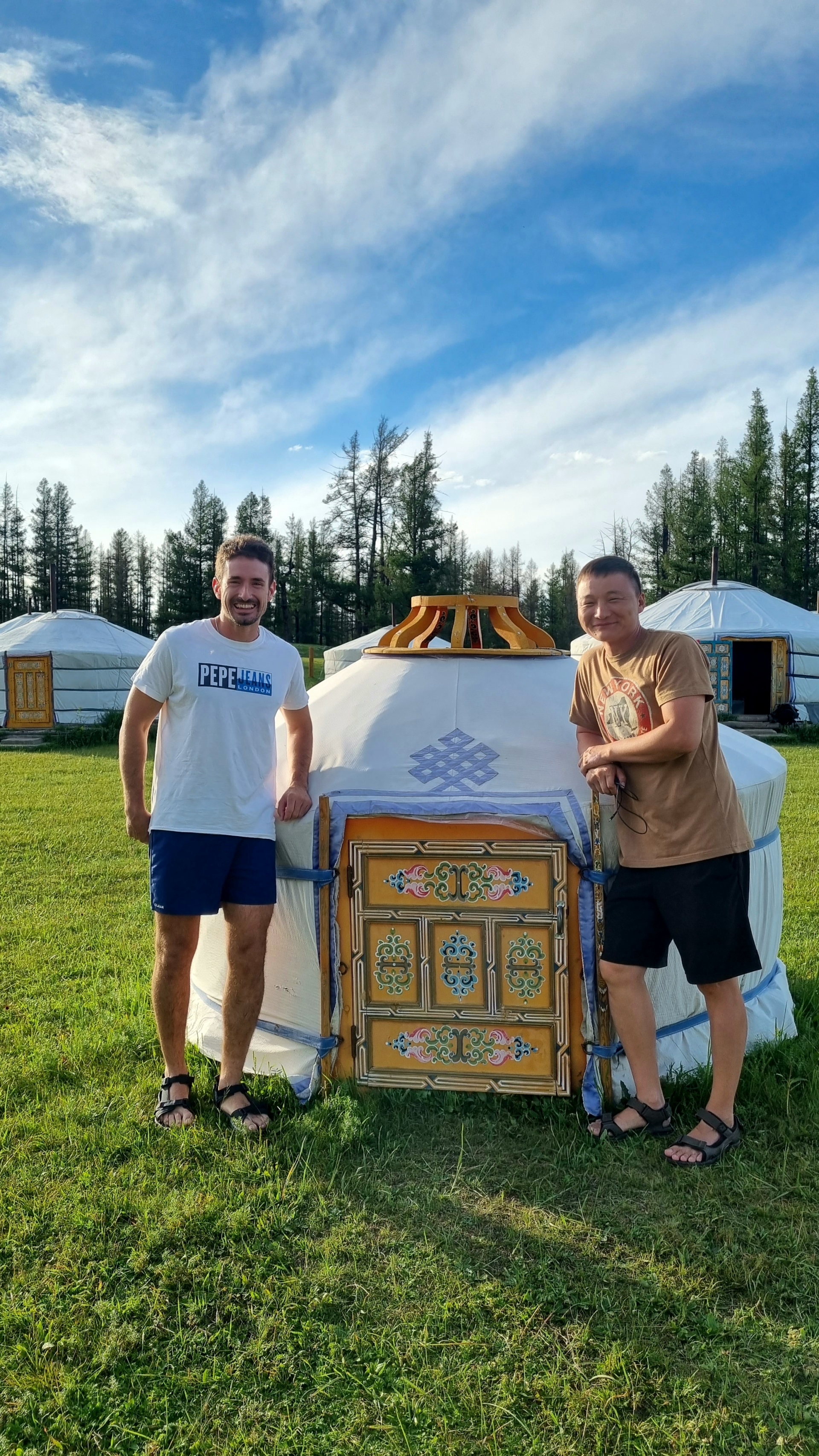Destinations
Mongol Els / Elsen Tasarkhai
Mongol Sand Dune massive lies along the east side of the Tarna river and it holds 58.3% of the dunes in Khangai/Central region. The widest part of the sand dune is 9-10 km, birch and larch trees cover the top. Also, this is a home to boar, wild cats, fox, musk deer, wolf, rabbit, badger, and ferret as well as birds like golden eagle, saker falcon, upland buzzard, common kestrel, raven, hawk, magpie, black kite, shell duck etc. The mountain has been protected since 2003 as a National Park. There are many historical places, including: Uvgun temple, granite stone statues, Senget khad dating back to the Bronze Age, many tombs and tumuli in Khiidiin davaa in the south of Khugnu khan.
.jpg)

Erdenezuu Monastery
The first Buddhist monastery, Erdenezuu, was built on the ruins of Kharakorum in 1586 by the order of Abtai Sain Khan, a distant but powerful relative of Chinggis Khaan. Stone monuments, bricks and many other building materials from the ruins of Karakorum, the capital city of the Great Mongol Empire, were used in the construction of the monastery.
The monastery occupies an area of 1,600 square meters, which is exactly 10 times smaller than the original city area and is surrounded by a stone wall with 108 stupas and four gates at all sides. The Erdenezuu monastery preserves works of the Mongolian artisans, painters, sculptors, embroiders and craftsmen of 17-19th centuries.
Erdenezuu flourished, and at one point had one hundred temples and thousand lamas (Buddhist monks) in residence. During the 1930’s political purges, most of the temples were destroyed and many of the lamas were either executed or imprisoned. The temple remained closed until 1965 when it was finally permitted by the Mongolian government to reopen as a museum, not a place of worship. However, Erdenezuu would keep its former glory as a sacred place of worship for local Mongolians and serve as an important historical site for visitors.
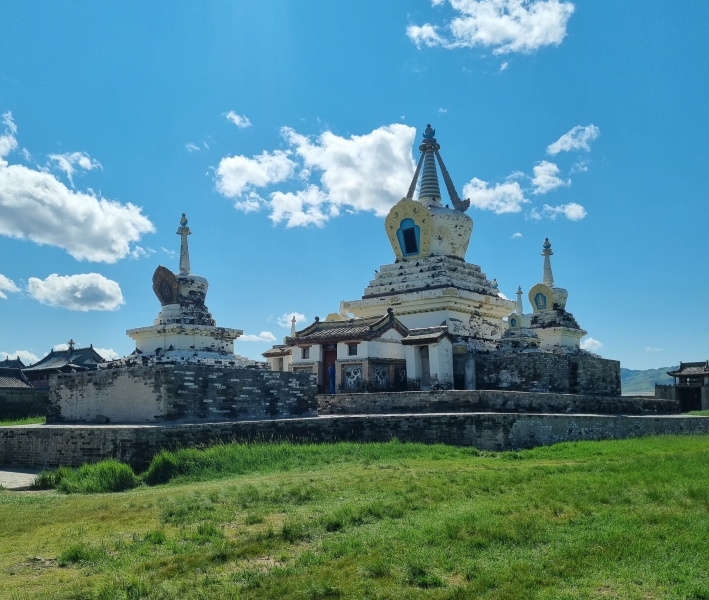
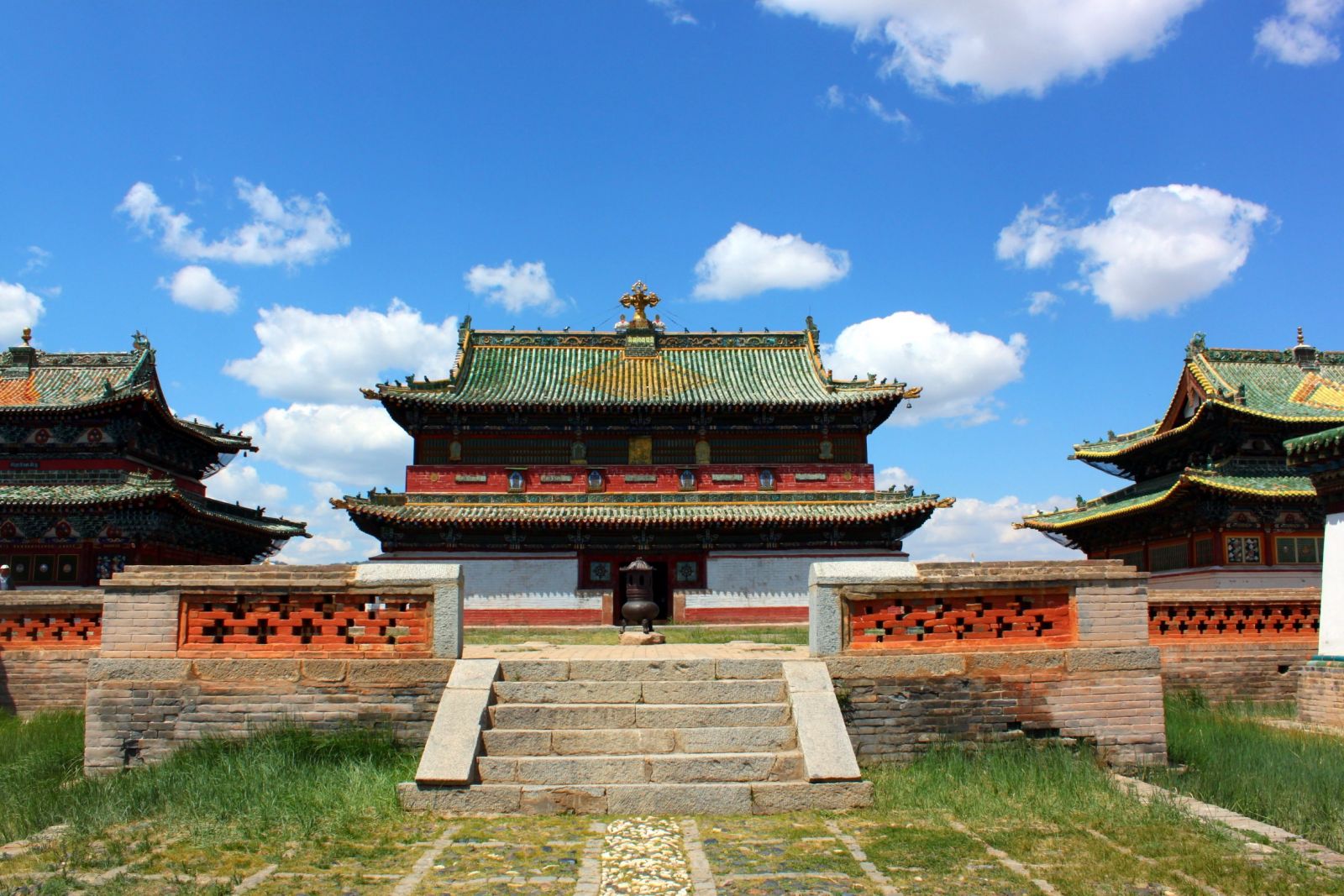
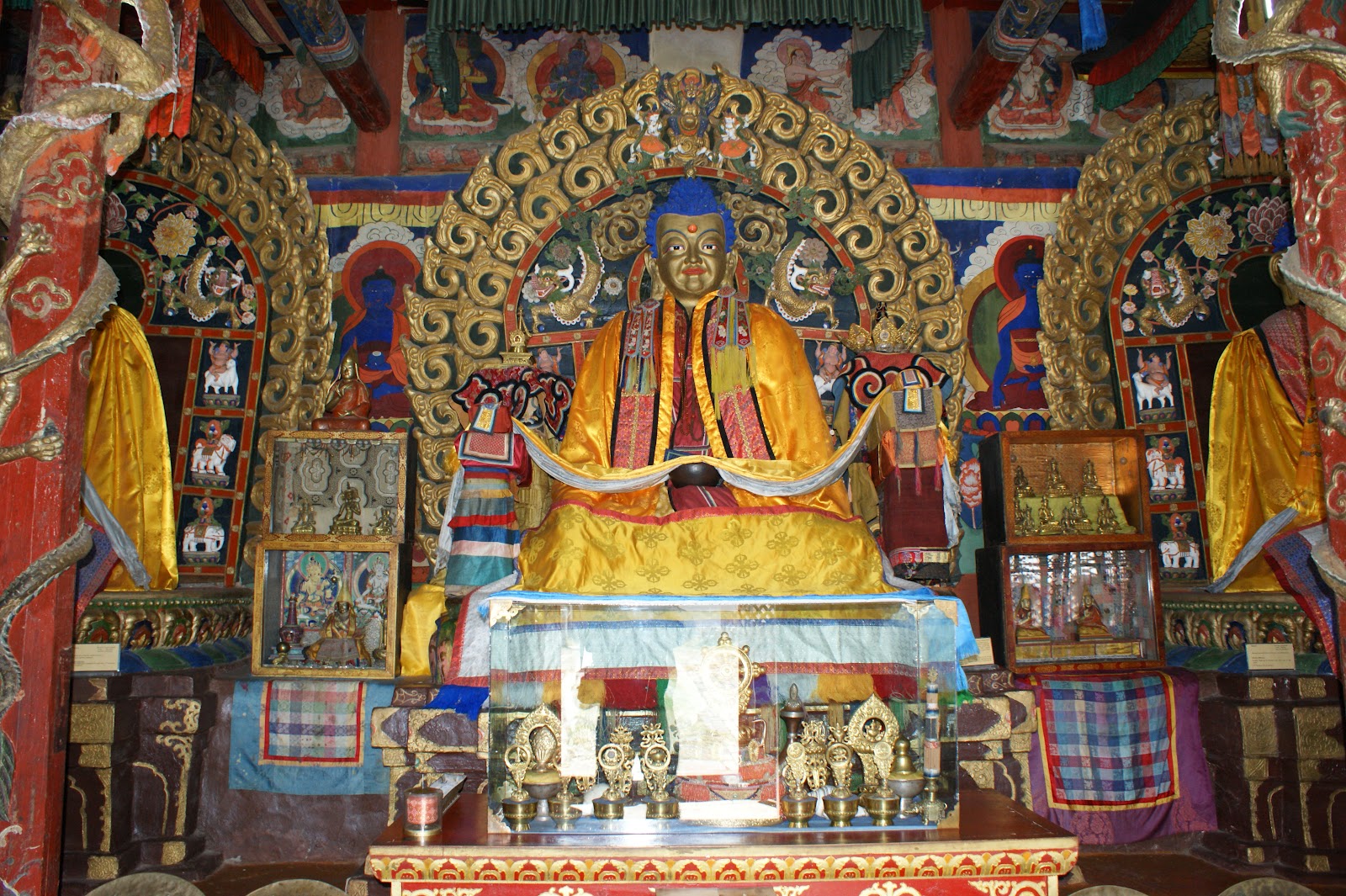
Kharkhorin
Kharkhorin was the capital city of Great Mongolia Empire in thirteenth century. It is located on the right bank of Orkhon river, 400 km south-west of Ulaanbaatar which is the current capital of Mongolia. All around this stronghold, craftsmen's and traders' quarters and other houses were gradually built, until, by about 1230, the area had taken on the appearance of a town.
In 1380, Kharkhorin was destroyed. But approximately two centuries later, on the same site, there arose the yurt of Avtai Khan, founder of the Erdene Zuu Monastery. The great circular platform which form its base is still visible today. The monastery of Erdene Zuu is a focal point in the history and culture of the Mongol people.
Besides paintings, ornaments and embroideries dating from the fifteenth to the seventeenth centuries, it houses a whole library of rare manuscripts and wood-block printed editions. Here, too, are preserved the works of the seventeenth-century painter and sculptor Zanabazar, great illustrator of the Buddhist canon and one of the first Mongol artists to have attained universal stature. In his day there was an extraordinary flowering of the arts and culture in Mongolia. When its heyday, there were about 62 temples and 1500 monks. But during the Stalinist purge in 1930s, the monastery was destroyed. In 1965 it restored and became a museum.
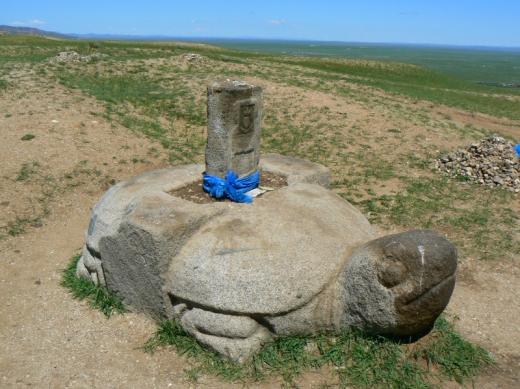
.jpg)
Khorgo Volcano
Khorgo Mountain is a dead volcano which lies on the west of Tariat village of Arkhangai province. Khorgo crater, situated at an altitude of 2.210 meters with a diameter of 20 meters and depth of 70 to 80 meters, is the most interesting at all. About 8000 years ago volcanic lava flooded the valleys nearby which are covered today with small forests of Sibirian larch and a great variety of berries and flowers. You can climb up to the rim of the crater for some fabulous views. There are steps uo to the crater from the west side.
Eight Lakes
The Khuisiin Naiman Nuur National Monument is located in the Central Mongolian Khangai mountain range and represents a typical high mountain area of Mongolia with max. The area of Naiman Nuur (Eight Lakes), which was created by volcanic eruptions centuries ago and 3,163 metres above sea level Khuisiin Naiman Nuur (Navel Eight Lakes) is located on over 2,400 metre above sea level. The area of 11,500 hectare size was declared a National Monument in 1992. The lakes are named Shireet, Khaliut, Bugat, Khaya, Khuis, Onon, Doroo and Bayan-Uul. Some of the smaller lakes are completely dried up, the second largest lake Khuis Nuur is dried up to ten percent. The area is very suitable for hiking or horseback riding tours. The lakes located in a high mountain area with sub alpine mountain meadows and coniferous forests of Siberian Pine and Siberian Larch; flat valley areas with lava stone fields in the north of the protected area and barren mountain tops, and the lakes. The mean air temperature is minus 8 to minus 6 degree Celsius, and the annual total precipitation is 400 to 500 millimeter. In this area, there are 50 species from 22 families have been recorded such as Black-throated Diver, Great Cormoran, Bar-headed Goose and Whooper Swan. The area covers 11,500 hectares around the lake located in the Uyanga soum territory of Ovorkhangai aimag to the southwest of the Khangai mountain range and its surrounding area. It was placed under state special protection, and was included in the category "Cultural and Historical Sites".

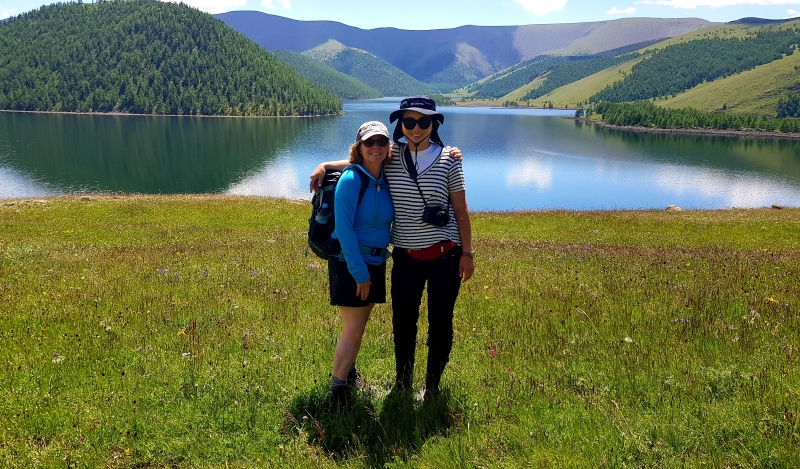
Ogii lake
Ogii is one of the biggest lakes in Mongolia and located in Arkhangai province. It has 25.7 km squire area, average depth is 6.64m, in some sections 15.3 m and coastal length is 24.7 km. It is quite stunning place for birdwatching, fishing and swimming. There are 150 sorts of extremely rare and rare species birds of passage come to settle down on the "Ogii" lake. Also the "Ogii" lake has 14 sorts of fish belonged to the North Atlantic ocean area such as Esoc lucius, Rutilus lacustrisl, Perca fluviatilis, leucisous idus, Cyprinus carpio haematopterus, Parassius auratus gibelio, lota, Leuciscus baicalensis, Phoxinus pall, Phoxinus peronurus, Barbatula, Toni, Cobitus taenia sibisica and has plenty of fish reserves.

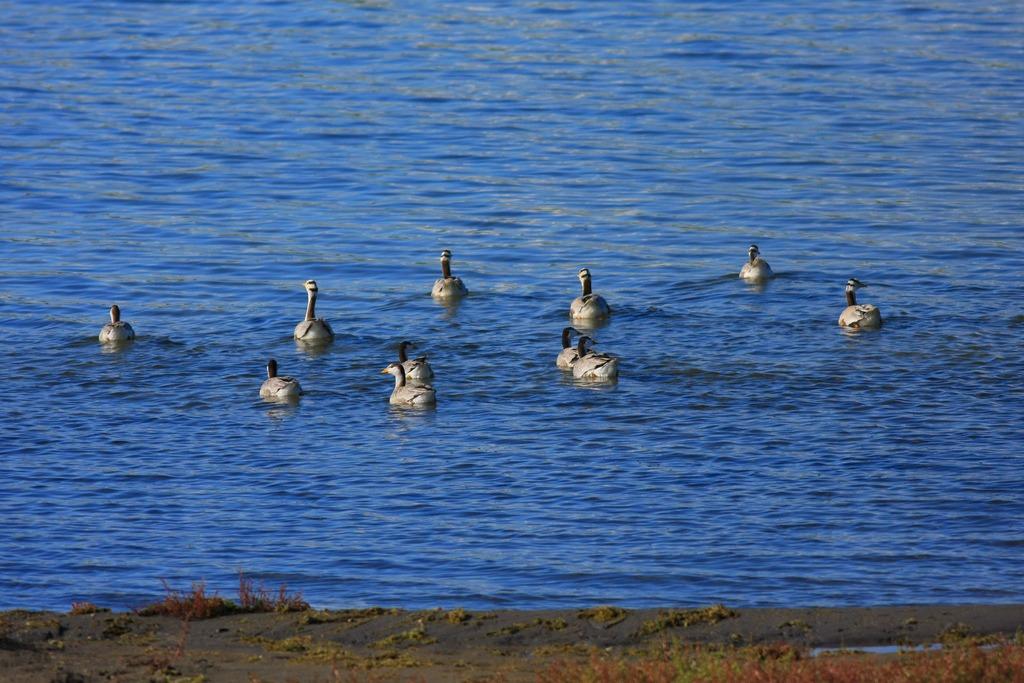
Orkhon Waterfall
After a heavy rain the magnificent seasonal Orkhon waterfall is one of the best sights in the Central Mongolia. About 250m downstream from the waterfall, you can climb down to the bottom of the gorge; it is 22m deep and dotted with pine trees. The Orkhon river, longest river in Mongolia, begins at the state worshipped mountain Suvraga Khairkhan in the Khangai range. The drainage basin of the river is 132835sq km. The river is 10-60 m wide to begin with but it becomes 120-150m around the end and the speed of the river flow decreases. The Orkhon has many species of fish like the pike, Siberian sturgeon, taimen, asian common asp, Siberian grayling, roach etc. There are many rocks and boulders around the river as well as some waterfalls like a small waterfall with 4-5 m height and the Ulaan tsutgalan waterfall- biggest in Mongolia. The Orkhon river Valley has been protected since 2006 as a National Park.
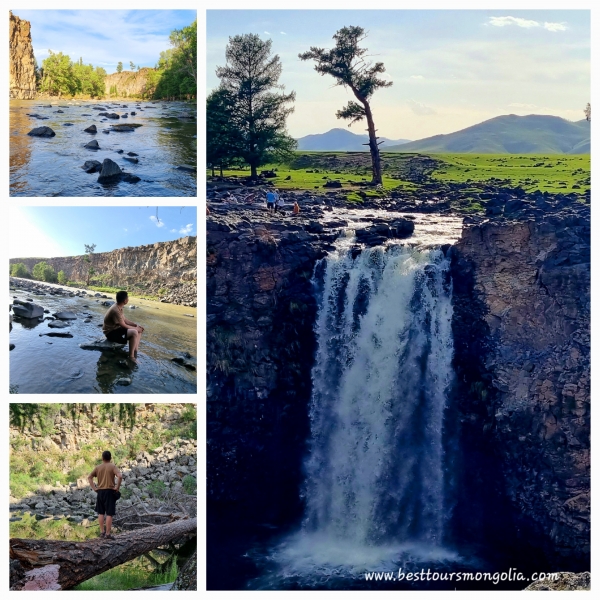
Orog Lake
Orog lake is located about 100 km south of the Bayankhongor city. It's located at the end of the Tuin river and is nestled amongst Ikh Bogd mountains.Orog Lake is a saltwater lake. Water levels vary, depending on inflow from the Tuin River,which rises in the Khangai mountain range. The lake is frozen from November until May. The Tuin River creates a large wetland on north side of the lake. To the south, the lake is bordered by the slopes of Ikh Bogd Mountain, which support desert steppe, and give rise to several streams with associated wetlands. On the northern side of the lake, there is a wide sand dune which stretches along the shore. Orog Lake is located within the Valley of Lakes. n the past the lake used to dry up and it's status as a premier wetland came into doubt, however, the UNDP recently supported the Tuin river sustainable land management program. This program's aim was to plant saxaul, caragana, elms, some fruit trees and Glycyrrhiza (sweet grass) in order to decrease desertification in the area. The program has been successful. Travelling up Ikh Bogd the morning after camping at Orog Lake will provide great sunrise views of Bayankhongor.


Taikhar Chuluu Rock
Mysterious Taihar Chuluu Rock stands not far from Tsetserleg town. The rock is steep-sided pinnacle of granite with a height of 25 meters. It rises abruptly from the flat grassland in the basin of Tamir River. Locals worship the rock as a deity. The rock is the subject of many local legends, the common one being that a Great Baatar, or hero, crushed a huge serpent here by hurling the rock on top of it. Locals claim there are some ancient rock, though you’ll be lucky to spot them through 30 years ago of Mongolian graffiti. There is no common agreement amongst geologists about the origin of this puzzling phenomenon, and it remains an enigma. There is an ovoo at the top as well.
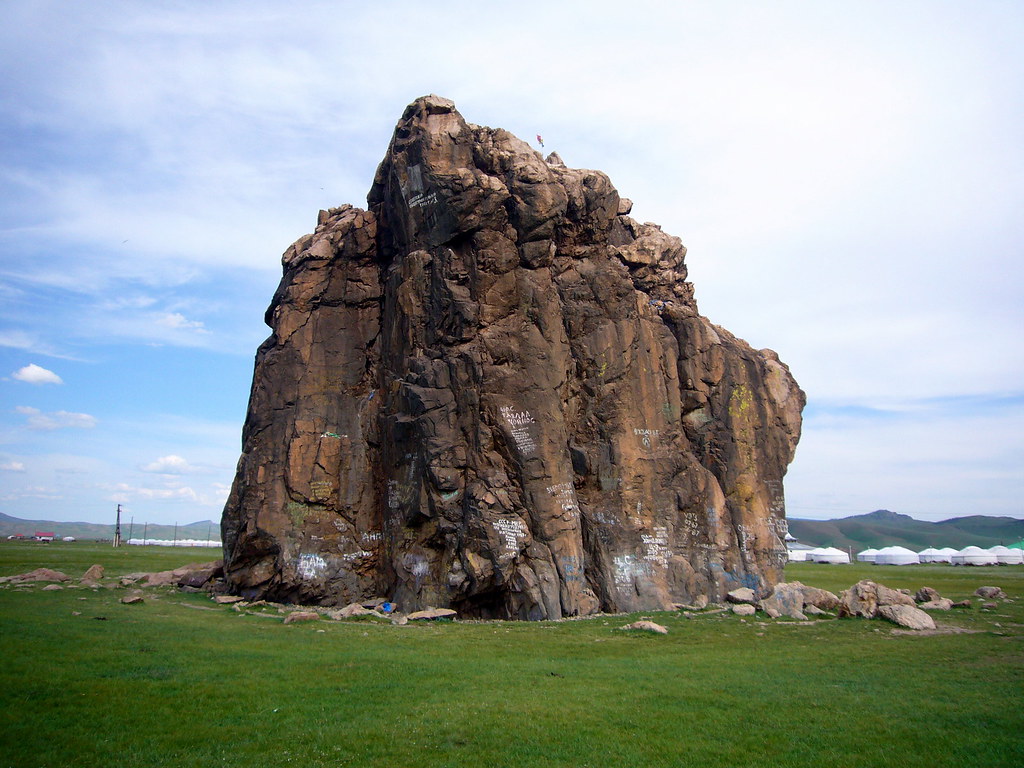
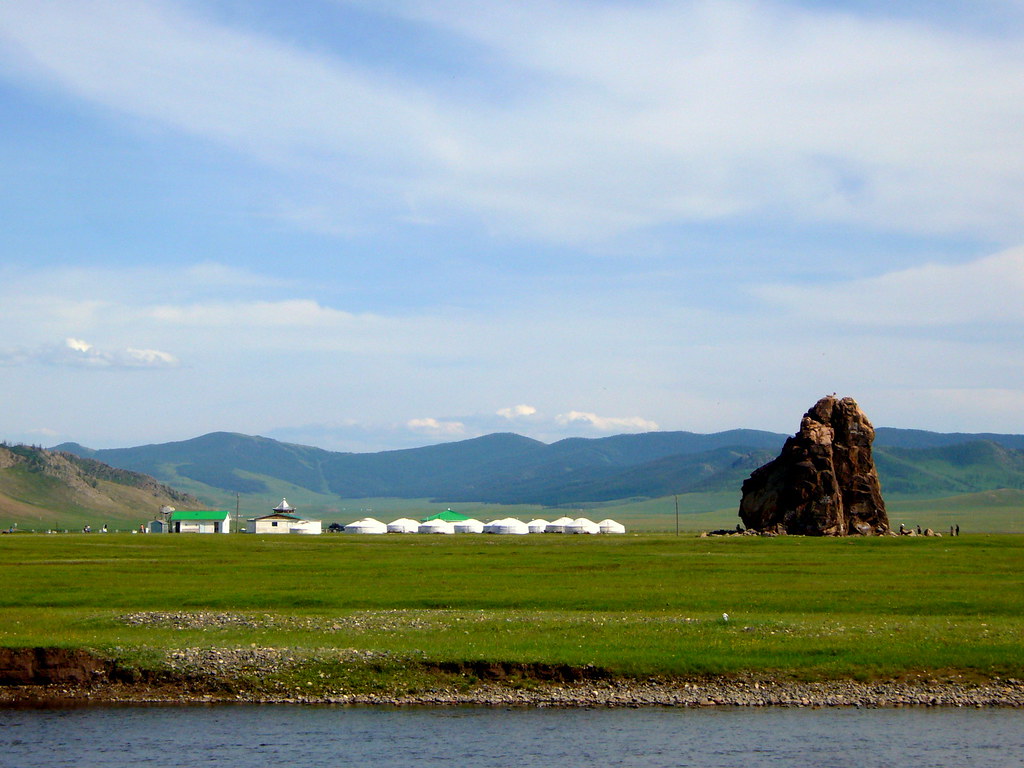
Terkh White Lake
Known as Great White Lake is lake in the Khangai Mountains in central Mongolia. In February, 2011 it was featured get away location on CNN.com. Terkhiin Tsagaan lake is a spectacularly beautiful lake with crystal clear water. The lake is 16km long, east to west, and around 4-6km wide, north to south. Terkhiin Tsagaan Lake itself, birdlife and mountains are now protected within the national park's restriction. The lake is perfect for swimming which has white sandy beaches. According to the legend, the lake was formed when an elderly couple forgot to cap a well after fetching water. The valley was flooded until a hero shot a nearby mountain top with his arrow; the shorn top covered the well and became an island in the lake. Another theory is that it was formed by lava flows from a volcanic eruption many millennia ago.
.jpg)
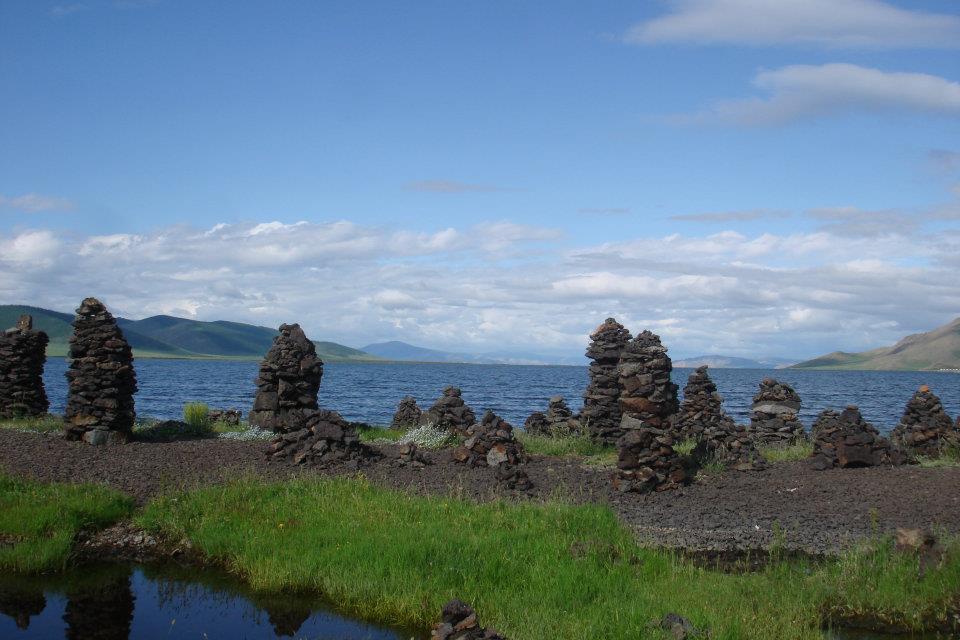
Tuvkhun Monastery
The monastery was built in 1654 by Saint Zanabazar who was a great sculptor and one of the biggest representative of Buddhism in Mongolia. The creation work temple dedicated to religious study and art works became the foundation of today's Tuvkhun Monastery. It is located on a rocky mountain hill surrounded by forests elevated in 2300 meters above sea level. In 1651, the first religious statesman Zanabazar built a small stony building. In 1648, about the time he had found what now Shankh monastery on the Shariin gol, Zanabazar noticed an unusual armchair-shaped peak among the ridges west of the Orkhon River. He soon concluded that the mountain, known as Shireet Ulaan Uul, was an auspicious spot. Upon his return in 1651 from his first trip to Tibet he had a small walled stone meditation hut built here. 1653, he visited Erdenezuu, founded by his great grandfather, and appeared before a convocation of kalkh nobility. While there he prevailed upon his followers to build temple and retreat at Shireet Ulaan Uul in his own personal use. Later it became worship where many of his famous artworks were created; including five transcendent Buddha's now located in the Zanabazar Fine Art Museum and Choijim Lama Musuem. Zanabazar also reportedly designed his Soyombo Alphabet while his residing here. During Zanabazar's lifetime retreat was called Bayasgalant Aglag Oron (Happy Secluded Place). After his death it became Tuvkhun Monastery, the name which it is known today. The small temple was heavily damaged by communists during the upheavals of the late 1930s. During the summer of 1997 extensive ceremonies were performed here and new statue of deity Gombo Makhagal (Mahakala) was placed in top of refurbished and consecrated. Several monks live at the monastery full time.The peak of where Tuvkhun is located resembles an easy chair with arm rest on either side. In the seat of the chair, several hundred meter above the base of peak to the temples. According to legend, only Zanabazar was allowed to right up to the temples. Others had to dismount at the base at base of the peak and walk up. Near the top of staircase, to the right of temples, are two wells about fifteen feet from each other. One has fresh water in it, while the other has slightly brackish water.
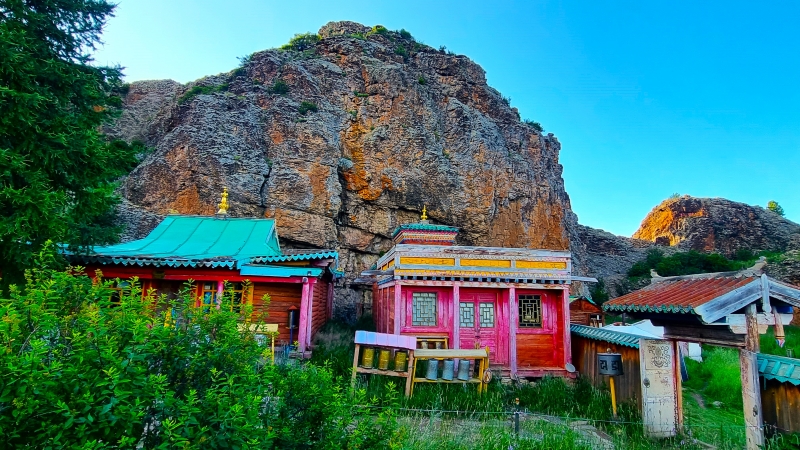

Ikh Bogd Mountain
Ikh Bogd "Great Saint" also known as Tergun Bogd, is a mountain of the Gobi-Altai mountains and located in the Bayankhongor province in Mongolia. It has an elevation of 3,957 metres (12,982 ft) above sea level. Rocky peaks loom over changing landscapes that are ideal for archaeological explorations, bird watching, wildlife veiwing, hiking and mountain climbing. Of its many peaks, canyons, and velleys, one of the province's most revered sites is the highest in the Gobi Altai range. Ikh Bogd mountain is found over its 50 km long. Following an earthquake of a magnitude 11, which hit the region in the 50’s, a 270 km fault emerged going from the North of Baga Bogd to the top North of Bayan Tsagaan. Consequently two small lakes were created : Oyut and Binderya. The first one stretches over 200m for 170m wide, reaching a depth of 25m. As for Binderya lake, it covers an area of 275m long against 100m wide, with a low depth of 14m. In the Ikh Bogd mountain counts 10 big caves, of which Tsagaan is the biggest of all. Long of 38 km and wide of 5 meters, reaches an height of roughly 10 m in its core. According to historians, people used to live in these caves 700 thousand years ago.

.jpg)
White Cave
The petroglyphs of Bichigtiin Am are entirely concentrated on a one small rocky mountain rising abruptly from the deep valley of Bichigtiin Am, Ikh Bayan mountain of Bayanlig soum, Bayankhongor province. There are hundreds of images of human beings, animals and symbols (tamga) there were engraved by the prehistoric people on the rocks. The first petroglyphs were likely to have been made approximately 3000 years ago BCE and people had continued to add illustrations until the 8th century CE.
Men riding horse or camel with horse, cattle and camel herds as well as hunting scenes and men with carts are common image among these rock arts. Men are illustrated riding horse with or without saddle. An image of cattle pulling a plough and man directing it is one of the rare artefacts related to farming found in Mongolian Gobi region. Bedrock and large blocks of dolomite debris occur at depths of as much as four meters below the present surface of the cave interior. An open chimney in the roof of the main rotunda and the presence of sporadically active streams within the cave complex itself has allowed erosional episodes profoundly influencing the composition and distribution of the cave’s sediments. There are hundreds of images of human beings, animals and symbols (tamga) there were engraved by the prehistoric people on the rocks. The first petroglyphs were likely to have been made approximately 3000 years ago BCE and people had continued to add illustrations until the 8th century CE. A wide range of mammalian and avian species has been identified thus far, many with important paleoecological implications, including the Chiru or Tibetan Antelope (Pantholops hodgsonii) which is currently restricted in its distribution to the Qinghai-Tibet Plateau, numerous rodents, and 17 species of birds including Saker Falcon
Tsagaan agui cave and Bichigt rock drawings are protected by Mongolian government since 1998.


Chuluut River Canyon
Chuluutin havtsal is a canyon 25 meters deep and very beautiful to stop by.
Chuluut River flows through the wide rocky canyon that was made up of basalt from lava of extinct volcanoes including Horgo. It provides perfect streams for white water rafting. You can see fish in the river from the top of the canyon.

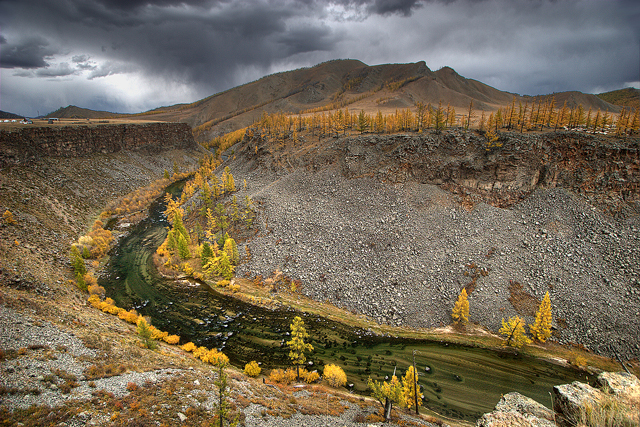
Bogd Khan Mountain National Park
One of the two most popular short trip destinations out of Ulaanbaatar is Bogd Khan National Park. Lying in the south of Ulaanbaatar, Bogd Khan Mountain has been the most ancient national park of the country since 300 years ago. The Bogd Khan contains sacred mountains and rock carvings, over 300 plant varieties, animals such as boar, fox, hare, wolf, squirrel, eagles and woodpeckers, plus a deer farm. You can also visit the Manzushir Khid 18th century monastery in the southern reserve. The Monastery overlooks a beautiful valley of streams and pine, birch trees, dotted with granite boulders. Established in 1733, it had over 20 temples and was once home to at least 300 monks. There are ample opportunities to explore the nomad's lifestyle and sample airag, the fermented mare's milk that is the traditional nomad beverage. This place is also ideal for trekking, hiking and horse riding.

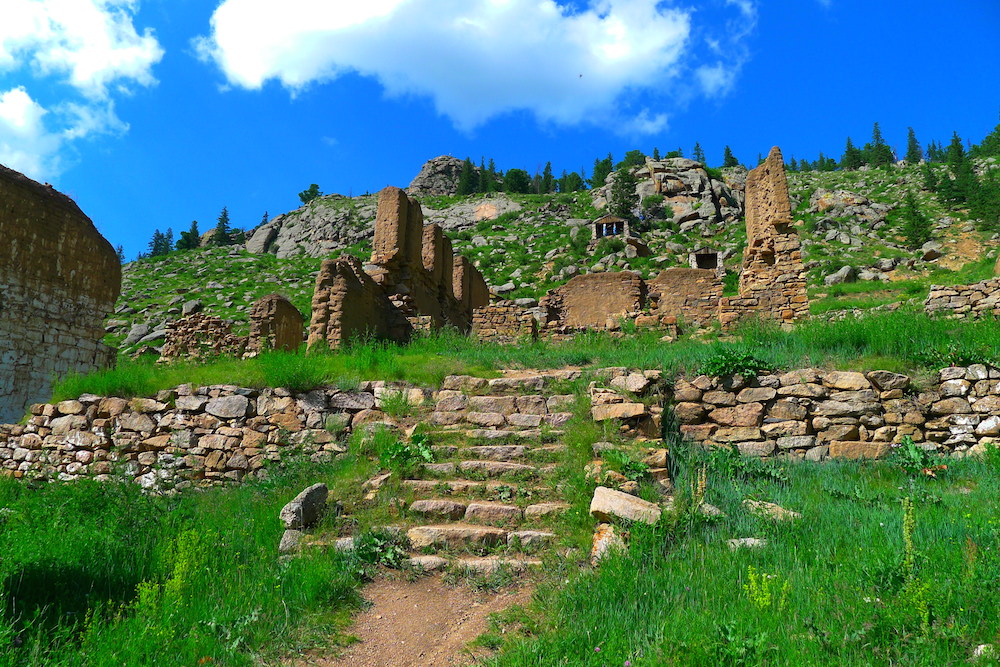
.JPG)

.JPG)
